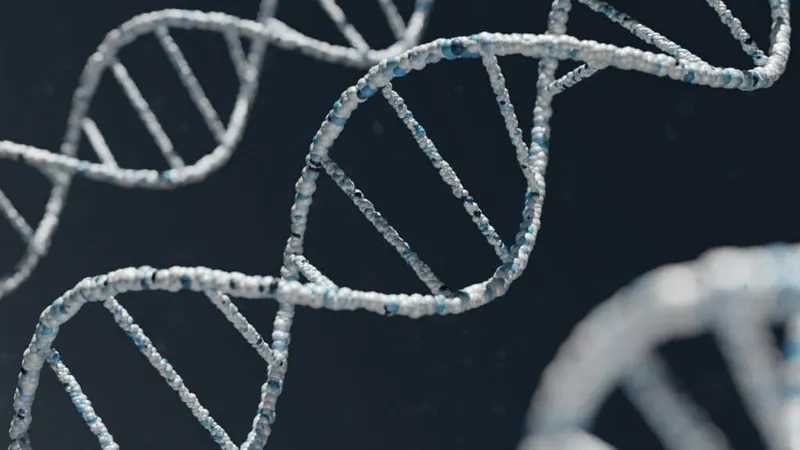
DNA Tracing: The Game Changer in Foodborne Outbreak Investigations
2025-06-12
Author: William
Revolutionizing Food Safety Investigations
In a groundbreaking shift, forensic food epidemiology is leveraging advanced genetic analysis to tackle the mysteries of foodborne pathogens. By utilizing the unique DNA fingerprints of harmful bacteria such as Salmonella, E. coli, and Listeria, scientists are now able to trace the origins of outbreaks with astonishing accuracy.
From Outdated Methods to Cutting-Edge Technology
Gone are the days of pulsed-field gel electrophoresis (PFGE), a technique previously employed to identify DNA patterns in outbreaks. While PFGE linked certain cases, its lack of resolution made it difficult to distinguish closely related bacterial strains. A notorious example occurred during a 2018 Salmonella outbreak, when unrelated cases were mistakenly grouped, complicating the investigation.
Enter whole-genome sequencing (WGS), a technology that decodes the complete DNA of pathogens, capturing even the slightest genetic mutations. This revolutionary method has become a game changer, allowing investigators to identify single-nucleotide polymorphisms (SNPs)—minute changes invisible to earlier techniques—and effectively separate outbreak-related cases from background infections. Now, the CDC’s PulseNet network utilizes WGS to detect clusters of illnesses arising from near-identical bacterial genomes, signaling potential outbreaks.
How the Investigation Works: A Step-by-Step Guide
Once an outbreak is identified, investigators follow a meticulous process to connect genetic clues to their sources:
1. **Cluster Identification**: By comparing WGS data from affected individuals, genetic matches can be established. An example from the 2014 listeriosis outbreak linked 35 cases across multiple states, despite no obvious connections.
2. **Hypothesis Generation**: Health officials conduct interviews regarding food exposures. In Listeria cases, high-risk foods such as deli meats and soft cheeses are often explored.
3. **Source Confirmation**: Environmental samples from suspected food sources are subjected to WGS. When pathogen genomes from patients match those from food samples, it provides irrefutable evidence. For instance, during a 2015 Listeria outbreak traced to ice cream, WGS confirmed matches with clinical isolates from production environments, leading to swift recalls.
Case Studies: DNA as Irrefutable Evidence
Several high-profile cases highlight the effectiveness of DNA tracing:
- **Caramel Apples (2014)**: WGS identified Listeria in caramel-dipped apples, revealing that the insertion of sticks created microenvironments where pathogens flourished.
- **Reptile Feeder Mice (UK)**: Initial surveillance deemed human Salmonella infections sporadic until WGS uncovered a persistent outbreak strain in mice sold as reptile food, allowing for targeted interventions.
- **Ice Cream (2015)**: Environmental testing at an ice cream production facility revealed Listeria presence. WGS connected it to clinical cases stretching back five years, highlighting how some pathogens can linger as 'resident strains'.
Transforming Regulations and Future Innovations
The implications of WGS extend beyond investigation; they affect regulatory measures as well. Persistent pathogen strains in food facilities prompt FDA inspections under the Food Safety Modernization Act. Innovations like spray-on DNA barcodes on produce could further revolutionize traceability, enabling lightning-fast identification of growers through PCR testing.
Global collaborations have also intensified, with databases like GenomeTrakr housing over 100,000 pathogen genomes, facilitating real-time tracking during multi-national outbreaks.
Forensic food epidemiology has evolved from a reactive approach into a proactive strategy, transforming genetic clues into actionable insights that ultimately safeguard public health.









 Brasil (PT)
Brasil (PT)
 Canada (EN)
Canada (EN)
 Chile (ES)
Chile (ES)
 Česko (CS)
Česko (CS)
 대한민국 (KO)
대한민국 (KO)
 España (ES)
España (ES)
 France (FR)
France (FR)
 Hong Kong (EN)
Hong Kong (EN)
 Italia (IT)
Italia (IT)
 日本 (JA)
日本 (JA)
 Magyarország (HU)
Magyarország (HU)
 Norge (NO)
Norge (NO)
 Polska (PL)
Polska (PL)
 Schweiz (DE)
Schweiz (DE)
 Singapore (EN)
Singapore (EN)
 Sverige (SV)
Sverige (SV)
 Suomi (FI)
Suomi (FI)
 Türkiye (TR)
Türkiye (TR)
 الإمارات العربية المتحدة (AR)
الإمارات العربية المتحدة (AR)